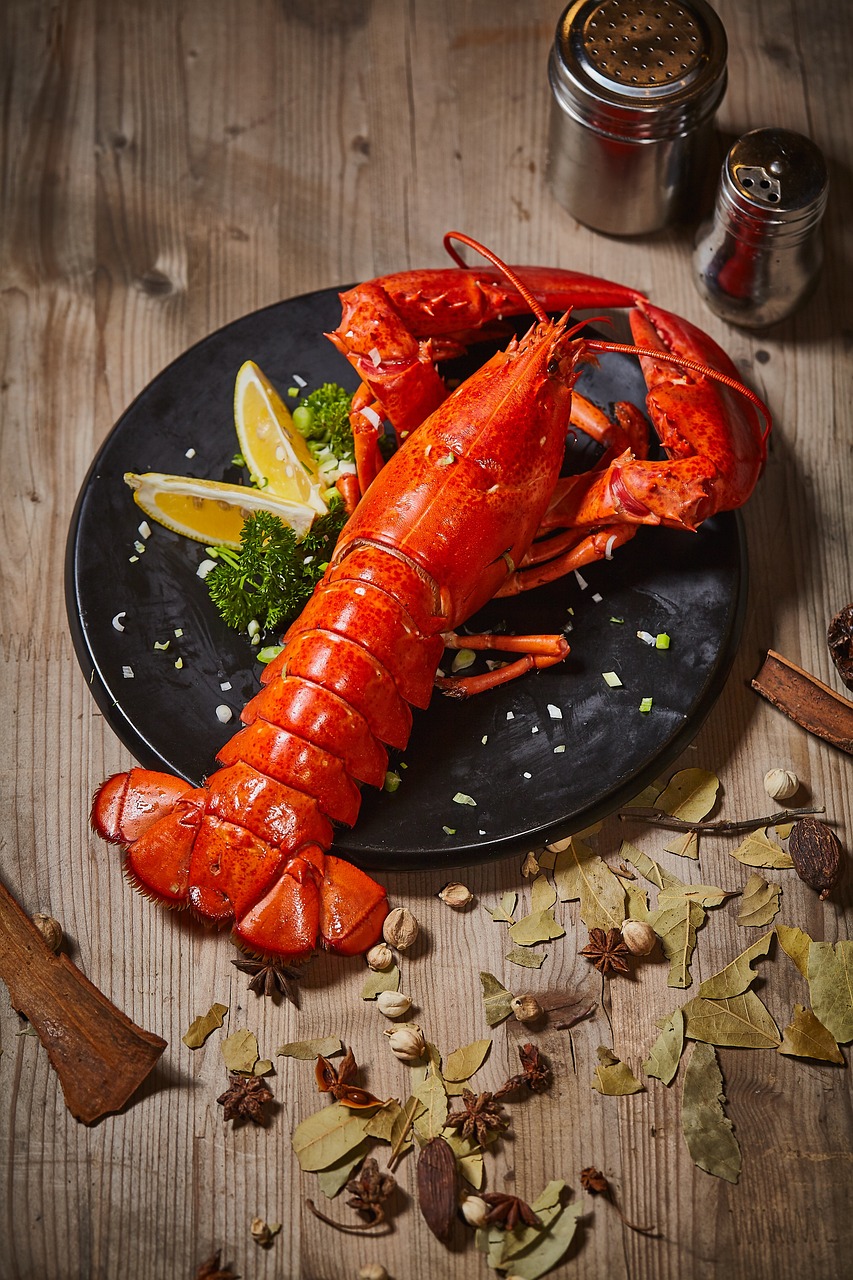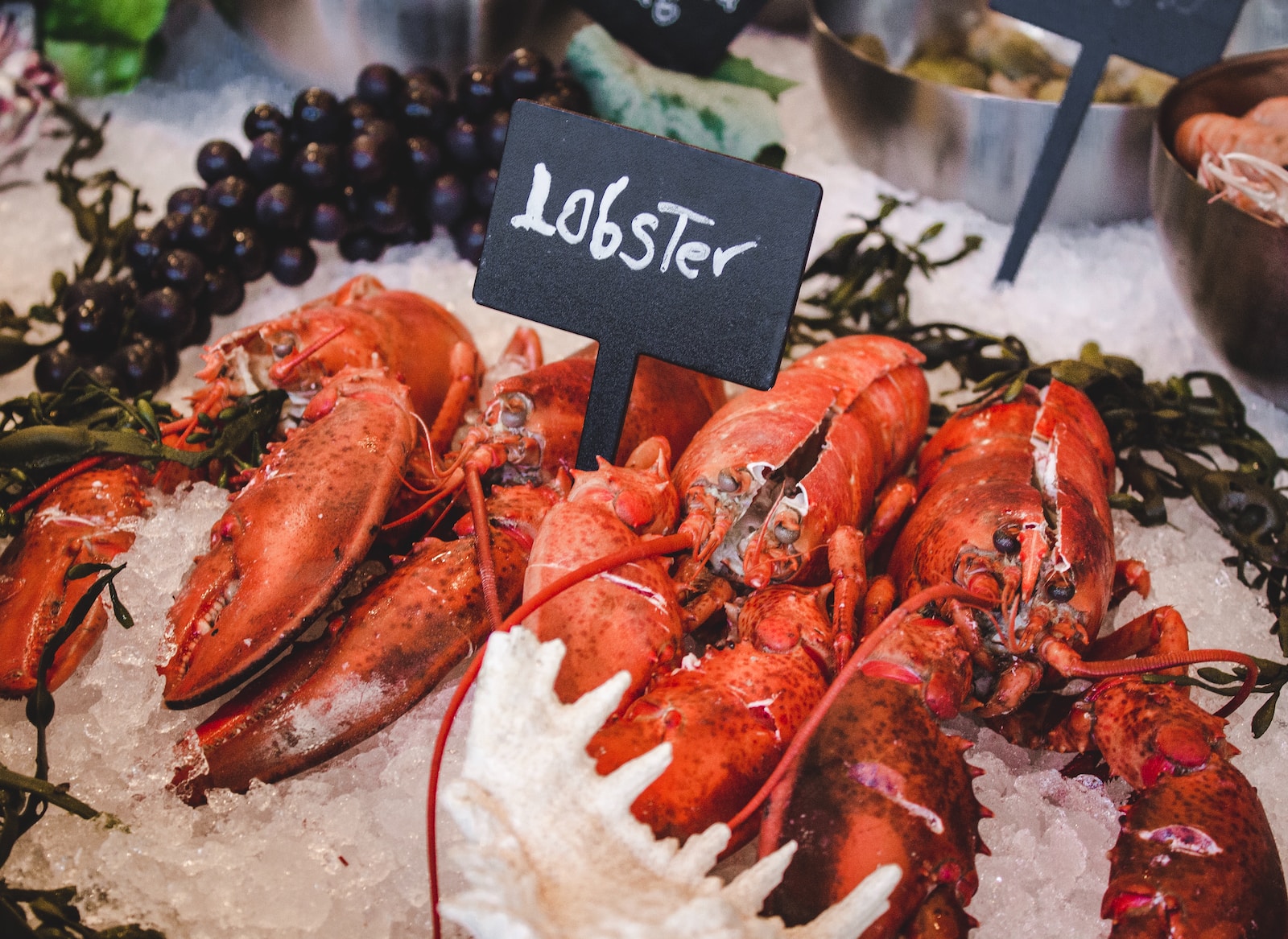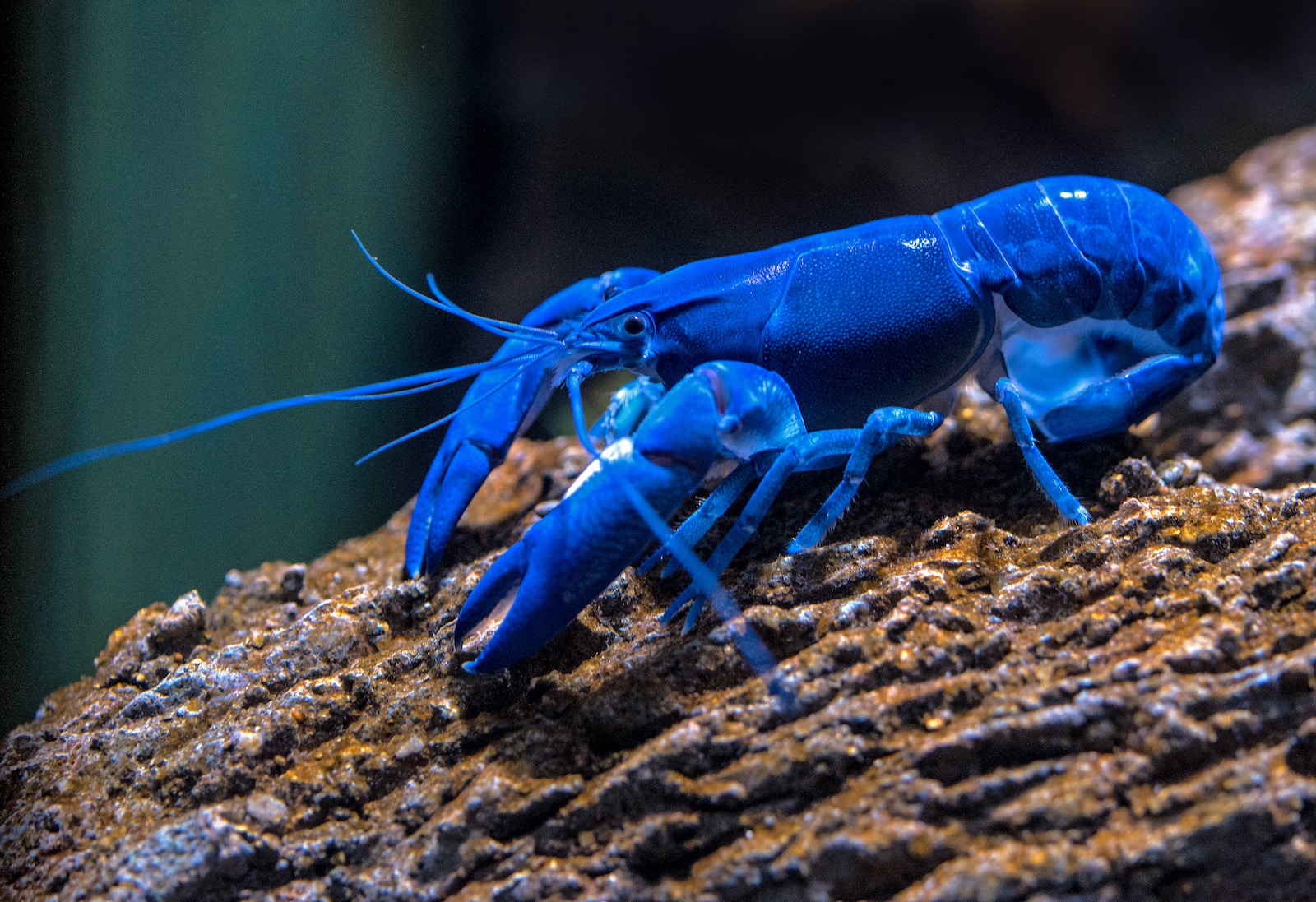
Lobster is a delicacy that many people enjoy, but it can be difficult to tell if it has gone bad. Eating bad lobster can cause food poisoning, which can be dangerous and even life-threatening. In this article, we will discuss how to tell if lobster is bad, so you can avoid getting sick.
One of the easiest ways to tell if lobster is bad is by its smell. Fresh lobster should have a mild, ocean-like scent. If the lobster smells sour, ammonia-like, or has a strong fishy odor, it may have gone bad. Another way to tell if lobster is bad is by its appearance. Fresh lobster should be a bright red or brownish-red color. If the lobster is gray or black, it may be spoiling. Additionally, if the lobster has a slimy or milky appearance, it may be bad.
It is important to note that even if the lobster appears and smells fresh, it may still be bad. Lobster can go bad quickly, especially if it has not been stored properly. Therefore, it is crucial to follow proper food safety practices when handling and storing lobster. By knowing how to tell if lobster is bad, you can ensure that you and your loved ones stay safe while enjoying this delicious seafood.
Table of Contents
Identifying Bad Lobster

When it comes to enjoying lobster, it is crucial to know how to identify bad lobster. Bad lobster can cause food poisoning and other health problems. Here are some ways to identify bad lobster:
Appearance
One of the first things to look for when identifying bad lobster is the appearance. Fresh lobster meat should have a bright and pinkish hue. If the meat appears discolored or dull, it could be a sign that the lobster is bad. The shell should also be bright and clear, not cloudy or discolored.
Smell
Another way to tell if lobster is bad is by smelling it. Fresh lobster meat should have a mild ocean scent. If the lobster smells sour, ammonia-like, or rotten, it is likely spoiled and should not be consumed.
Texture
The texture of the lobster meat is also an important indicator of its freshness. Fresh lobster meat should be firm and springy to the touch. If the meat feels mushy or slimy, it is likely bad and should not be eaten.
Eyes and Tail
When purchasing a whole lobster, it is important to check the eyes and tail. The eyes should be clear and not sunken, which is a sign that the lobster is old. The tail should be curved and not straight, which is a sign that the lobster has been dead for a long time.
Shell
The shell of the lobster can also provide clues to its freshness. A soft shell can indicate that the lobster is molting, which is a natural process. However, a cracked or damaged shell can be a sign that the lobster has been mishandled or is old.
By following these tips, you can identify bad lobster and avoid any potential health risks.
Understanding Lobster Texture

Lobster texture is an important factor in determining whether or not it is bad. A lobster’s texture can tell you a lot about its freshness and quality. Here are some things to look for when examining lobster texture:
- Firmness: Fresh lobster meat should be firm and springy to the touch. If the meat feels mushy or squishy, it may be a sign that the lobster is not fresh and should be avoided.
- Sliminess: Lobster meat should not be slimy or have a slimy texture. If the meat feels slimy to the touch, it may be a sign that the lobster is not fresh and should be avoided.
It is important to note that some people may mistake the natural lubrication of lobster meat for sliminess. However, sliminess is usually accompanied by an unpleasant odor and a mushy texture.
When examining lobster texture, it is important to trust your senses. If the lobster meat feels or smells off in any way, it is best to avoid it. While lobster can be a delicious and decadent treat, it is not worth risking your health for a bad batch.
Recognizing Off Odors

One of the most obvious signs of spoiled lobster is a bad odor. A fresh lobster should have a clean, ocean-like scent. However, if the lobster smells off or has a pungent odor, it is likely not safe to eat.
A common off odor associated with spoiled lobster is a fishy smell. This smell can be caused by the breakdown of proteins in the lobster’s flesh. If the smell is strong and unpleasant, it is best to avoid consuming the lobster.
Another off odor that can indicate spoiled lobster is an ammonia smell. Ammonia is a byproduct of bacterial growth, and if the lobster has been sitting for too long, bacteria can begin to grow and produce this smell. If the lobster smells strongly of ammonia, it is not safe to eat.
It is important to note that not all off smells are a sign of spoiled lobster. Sometimes, lobsters can have a slightly sweet or musky smell, which is normal. However, if the smell is strong and unpleasant, it is best to err on the side of caution and discard the lobster.
In summary, recognizing off odors is an important part of determining whether lobster is safe to eat. A fresh lobster should have a clean, ocean-like scent, and any strong or unpleasant odors can indicate spoilage. If in doubt, it is always best to discard the lobster to avoid the risk of foodborne illness.
Evaluating Taste and Quality

When it comes to evaluating the taste and quality of lobster, there are a few key factors to consider. These include the texture, flavor, and aroma of the meat, as well as any visible signs of spoilage.
First and foremost, lobster meat should have a firm and springy texture. If the meat feels mushy or slimy, this is a clear indication that it has gone bad. Additionally, the meat should have a sweet and slightly briny flavor, with a delicate aroma that is reminiscent of the sea.
It’s also important to pay attention to the color of the meat. Fresh lobster meat should be a vibrant white color, with no discoloration or dark spots. Any discoloration or black spots on the meat can be a sign of spoilage, and should be avoided.
When dining on lobster, it’s important to ensure that it has been cooked properly. Undercooked lobster can be dangerous to eat, while overcooked lobster can be tough and rubbery. A perfectly cooked lobster should have tender, juicy meat that is easy to remove from the shell.
Overall, evaluating the taste and quality of lobster requires a keen eye and a discerning palate. By paying attention to the texture, flavor, aroma, and appearance of the meat, seafood lovers can ensure that they are getting the best possible dining experience.
Assessing Lobster Storage

When it comes to assessing lobster storage, there are a few factors to consider. Lobster can be stored in the fridge, freezer, or even on ice, but the length of time it can be stored varies depending on the method of storage.
If lobster is stored in the fridge, it should be consumed within two days of purchase. If it has been stored for longer than this, it is best to discard it. Frozen lobster, on the other hand, can be stored for up to six months in the freezer. However, it is important to note that the longer lobster is stored, the more likely it is to suffer from freezer burn.
When assessing lobster storage, it is important to look for signs of freezer burn. This occurs when the lobster has been stored for too long in the freezer and the moisture has evaporated, leaving the meat dry and discolored. Freezer burn can also affect the flavor of the lobster, making it less enjoyable to eat.
Proper packaging is also important when storing lobster. If the lobster is not properly sealed, it can be exposed to air and bacteria, which can cause it to spoil quickly. When storing lobster in the freezer, it is recommended to use a vacuum-sealed bag or wrap it tightly in plastic wrap to prevent freezer burn and maintain freshness.
In summary, when assessing lobster storage, it is important to consider the method of storage, the length of time it has been stored, signs of freezer burn, and proper packaging. By following these guidelines, you can ensure that your lobster is fresh and safe to eat.
Identifying Foodborne Illness Symptoms

Foodborne illnesses can be caused by consuming contaminated food, including bad lobster. Symptoms of foodborne illness can range from mild to severe and can include nausea, vomiting, diarrhea, and stomach cramps. In severe cases, foodborne illness can lead to hospitalization or even death.
Symptoms of foodborne illness typically appear within a few hours to a few days after consuming contaminated food. However, in some cases, symptoms may not appear for several weeks. If you suspect that you have consumed bad lobster or other contaminated food, it is important to seek medical attention immediately.
The following are some common symptoms of foodborne illness:
- Nausea
- Vomiting
- Diarrhea
- Stomach cramps
- Fever
- Headache
- Muscle aches
- Fatigue
If you experience any of these symptoms after consuming lobster or any other food, it is important to seek medical attention immediately. In severe cases, foodborne illness can lead to dehydration, organ failure, and even death.
It is important to note that not all cases of foodborne illness are caused by bad lobster. Food poisoning can also be caused by consuming food that has been contaminated with bacteria or other harmful substances. To prevent foodborne illness, it is important to practice proper food handling and storage techniques, including washing your hands before and after handling food, cooking food to the appropriate temperature, and storing food at the appropriate temperature.
Safe Handling and Preparation of Lobster
When it comes to handling and preparing lobster, there are a few important things to keep in mind to ensure that the seafood is safe to eat. Whether you’re dealing with live lobsters or raw lobster meat, following proper food safety procedures is key.
First and foremost, it’s important to handle live lobsters carefully. These creatures have sharp claws and can be quite feisty, so it’s best to use gloves or a towel when handling them. Additionally, live lobsters should be kept cold until they are ready to be cooked. This means storing them in a cooler or refrigerator with plenty of ice.
When it comes to cooking lobster, it’s important to make sure that it is cooked thoroughly. Raw lobster meat should be cooked to an internal temperature of 145°F (63°C) to ensure that any harmful bacteria is killed off. This can be done by boiling, steaming, or grilling the lobster.
It’s also important to keep cooked lobster meat cold until it is ready to be served. This means storing it in the refrigerator or on ice until it is ready to be eaten.
Overall, following proper food safety procedures is key when handling and preparing lobster. By taking the necessary precautions, you can ensure that your seafood is safe to eat and free from harmful bacteria.
Comparing Lobster with Other Seafood
When it comes to seafood, it can be challenging to tell if it has gone bad. However, by comparing lobster with other seafood, it is possible to notice some differences that can help determine if the lobster is still safe to eat.
One of the most significant differences between lobster and other seafood is the smell. Fresh lobster has a sweet and slightly briny smell, while bad lobster has a strong ammonia odor. This is in contrast to salmon, which has a mild, fresh smell, and ground beef, which has a slightly sweet smell.
Another difference to consider is the texture. Fresh lobster meat is firm and slightly chewy, while bad lobster meat is soft and mushy. This is in contrast to beef, which should be firm and slightly springy, and salmon, which should be firm and flaky.
Color is also an essential factor to consider when comparing lobster with other seafood. Fresh lobster meat is a bright, translucent white, while bad lobster meat can have a grayish or greenish tinge. This is in contrast to ground beef, which should be bright red, and salmon, which should be pink or orange.
Finally, it is essential to consider the source of the seafood. Lobster and other seafood should come from a reputable supplier, and it is always a good idea to check for any recalls or warnings before purchasing. This is especially important for ground beef, which has a higher risk of contamination.
Overall, by comparing lobster with other seafood, it is possible to determine if it has gone bad. Paying attention to smell, texture, color, and source can help ensure that the seafood is safe to eat.
Understanding Unusual Lobster Textures
When it comes to identifying bad lobster, texture is an important factor to consider. A healthy lobster should have firm and springy meat that is slightly translucent and has a sweet aroma. However, sometimes lobster may have unusual textures that can indicate spoilage or other issues.
One texture to watch out for is a cottage cheese-like texture. This can indicate that the lobster meat has started to break down and may be spoiled. If the meat has a slimy texture, it may also be a sign of spoilage.
Another unusual texture to look out for is a mushy or soft texture. This can indicate that the lobster has been frozen and thawed multiple times, which can cause the meat to break down and lose its texture.
In some cases, lobster meat may have a gritty texture, which can be a sign that the lobster has been exposed to sand or other debris. While this may not necessarily indicate spoilage, it can affect the overall quality of the meat.
If you notice any unusual textures when preparing or eating lobster, it is best to err on the side of caution and discard the meat. It is better to be safe than sorry when it comes to food safety.
Trusting Your Instincts
When it comes to determining whether lobster is bad, trusting your instincts can be a useful tool. While there are various methods for checking the freshness of lobster, your senses can often provide valuable information.
Here are some things to keep in mind when trusting your instincts:
- Smell: Lobster that is bad will often have a strong, unpleasant odor. If it smells fishy or sour, it’s likely not fresh.
- Texture: Fresh lobster should have a firm texture and feel heavy for its size. If it feels mushy or slimy, it’s a sign that it’s gone bad.
- Color: Live lobsters are typically a dark greenish-brown color. Once cooked, the shell should turn bright red. If the meat is discolored or has dark spots, it’s likely not fresh.
- Taste: While it’s not always easy to tell if lobster is bad by taste alone, if it tastes off or has a strange texture in your mouth, it’s best to err on the side of caution and discard it.
Overall, trusting your instincts can be a helpful tool in determining whether lobster is bad. If something seems off, it’s better to be safe than sorry and avoid consuming it.
Identifying Mold in Lobster
Mold is a type of fungus that can grow on the surface of lobster meat. It can appear as a fuzzy or slimy growth, and can range in color from white to black. Mold on lobster can be dangerous to consume, as it can produce harmful toxins that can cause illness.
To identify mold on lobster, look for the following signs:
- Fuzzy or slimy growth on the surface of the lobster meat
- Discoloration of the lobster meat, such as black or green spots
- Unpleasant odor or taste
If you suspect that your lobster has mold, it is best to discard it and not consume it. Mold can be difficult to remove from the surface of the lobster meat, and even if it appears to be removed, harmful toxins may still be present.
To prevent mold growth on lobster, it is important to store it properly. Lobster should be kept refrigerated at a temperature of 40°F or below. It should be consumed within 2 days of purchase, or frozen for longer storage.
In summary, mold on lobster can be identified by its fuzzy or slimy appearance, discoloration, and unpleasant odor or taste. If mold is suspected, it is best to discard the lobster and not consume it. Proper storage and handling can help prevent mold growth on lobster.